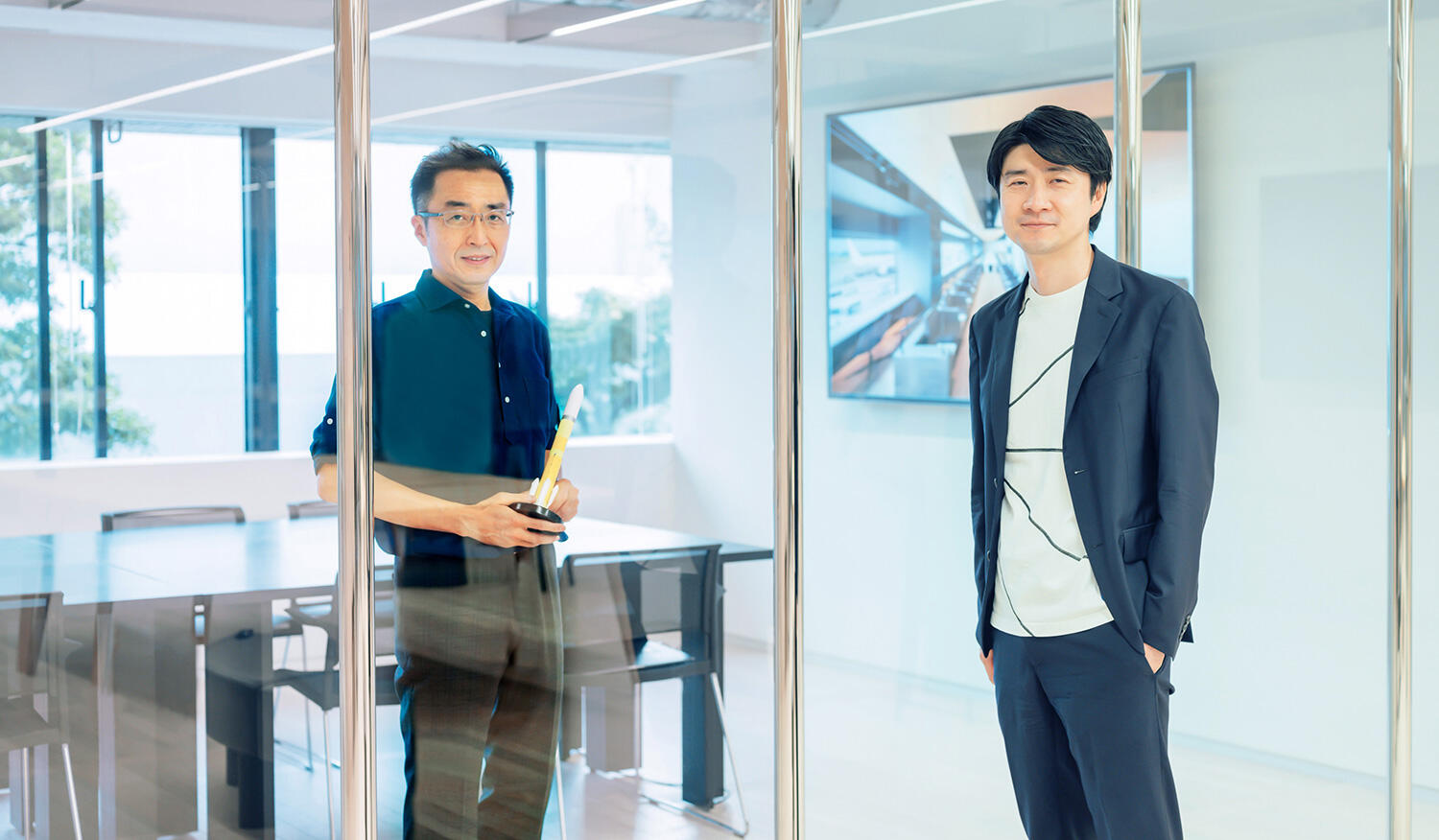
Special Talk: Design and Engineering

Design and Engineering:
Examining Space Transportation with These Two "Languages"
In order that Japan continues to possess a means of space transportation.
This is the background to the H3 Launch Vehicle that is under development as the successor to the currently operational H-IIA Launch Vehicle.
Test flight No.1 of the H3 is scheduled to take place by the end of FY2021 at the Tanegashima Space Center. Using the analogy of mountaineering, the project is currently at the last camp before the summit.
"All that's left is the summit; the path to launching the rocket is a series of steep gradients." Thus says OKADA Masashi, the Project Manager who is leading the development of the H3 Launch Vehicle.
Okada visited the design innovation firm Takram, which is a prominent player on the word stage, and held a dialog with TAGAWA Kinya, a design engineer there. Design and engineering: looked at through these two "languages" what are the new features of Japan's space transportation?
Design and engineering -
you can't choose one so you have to do both
Okada
What's your special field and what did you major in during your student years?
Tagawa
I majored from the department of mechano-informatics, so I studied structural and fluid mechanics.
Okada
I'm from virtually the same field, majoring from the department of aeronautics and astronautics.
Tagawa
I enjoyed fiddling about with machines from an early age, and entered the department of mechano-informatics with the ambition of becoming an engineer in the future. However, I reached a turning point when I used a summer holiday to work as an intern at a manufacturing company where I first became acquainted with the existence of design.
Okada
Would you say that was your starting point as a design engineer?
Tagawa
Yes, up until then I thought that engineers were the people who dealt with the appearance of the product and conducted the basic examination of it, but this chance made me realize that it is actually the designers who are in charge of that.
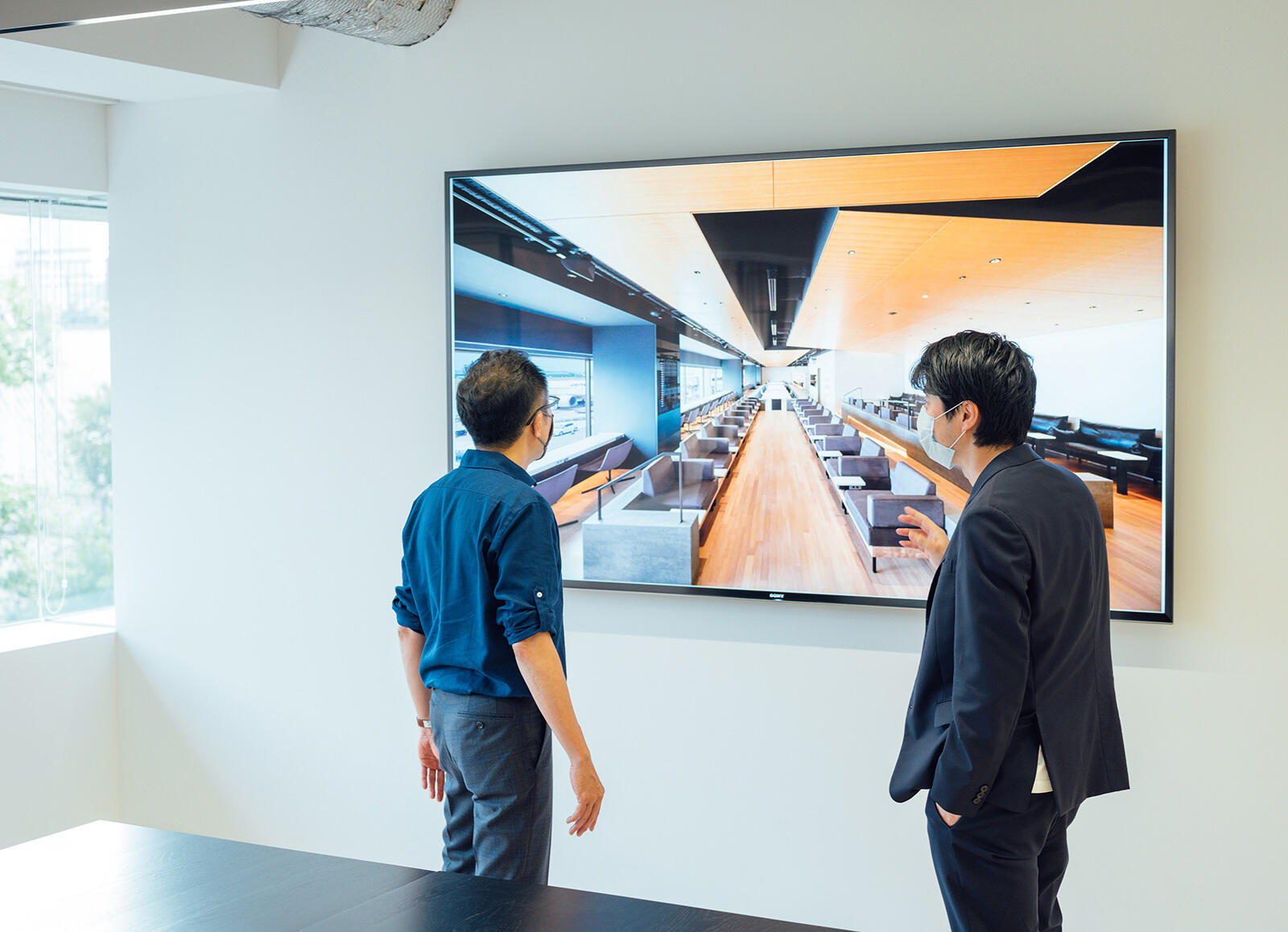
Okada
You mean in the sense of the division of work.
Tagawa
Yes, I was quite shocked at learning the fact that while the internal design is the work of engineers, the appearance is the scope of designers. I think that when most people hear the word "designer" what springs to mind is graphic designers, products designers, or car or fashion designers. In other words, designers are generally considered to be people who have studied art and whose work consists of thinking about the objects in esthetic terms. I realized in my final months at university that in the midst of this situation if I were to carry on down the path of engineering and then join a corporation I would not be able to have any say in the appearance of products.
Okada
There's no enjoyment if you can't do the things you really want to do.
Tagawa
Products that are highly functional and user-friendly naturally have sophisticated appearances and make people want to own them. I wanted to make things while being involved in the entire process from beginning to end, and I thought that the occupation that enabled you to do that was an engineer. This was because the professors at my university said to me that "if you graduate from the department of engineering you will be able to make anything, so don't worry." However, if I had continued to pursue the profession of an engineer I would have had to have given up on part of what I wanted to do. I didn't like that notion at all, so I went on an overseas study course in the UK to learn design.
Okada
That was quite a shift in direction for you, wasn't it.

Tagawa
There wasn't a single person around me who made the same choice, and my friends at university all said there must be something wrong with my head [laughs]. After returning to Japan I went to work in the design office led by the product designer YAMANAKA Shunji. He had also studied engineering, and was already doing work that involved being in charge of both engineering and design. I built up my experience there for five years before jointly launching my present company, Takram, in 2006.
Okada
So does that mean that at Takram you approach themes within the company without much division of work?
Tagawa
That's right. We hardly divide the work at all. The appearance, in other words the esthetic part, is managed without dividing up the functional and technical aspects by people who are able to do both while involving themselves with each other on a parallel basis.
Okada
I guess that is the key point.
Tagawa
It's safe to say that Takram is not the sort of company where we attack projects according to the artistic sense of a single individual or employee [laughs]. We start by logically thinking things through on an engineering basis. For example, when you are making a chair you have to think about whether or not it's comfortable to sit in. This is a matter of physical cognition about comfort or discomfort. You make a structural analysis of at what angle setting it becomes easy to sit in. It's a world of repeatability, so in that sense it's near to science. Once this lower level of cognition becomes sorted out you move on to a more sophisticated level. This is the matter of esthetic value, and the reconciliation of technical and esthetic value is a matter of meticulous detail that reaches a very high level. So instead of dividing up work, having one person pursuing the finished product from a twin perspective as though swinging a pendulum enables us to reach a better level and in a shorter time.
The rocket development workplace is created
by a battle with technology
Tagawa
I have actually been to the Tanegashima Space Center and watched the launch of the H-IIA Launch Vehicle. That was in my early 20s, and I went there with Yamanaka Shunji. The sight of the launch changed my outlook on life. It was a feeling like being overwhelmed by something that was beyond human scale.
Okada
Is that so? A rocket is a means of transport in which a massive amount of energy is condensed. The weather must have been good that day.
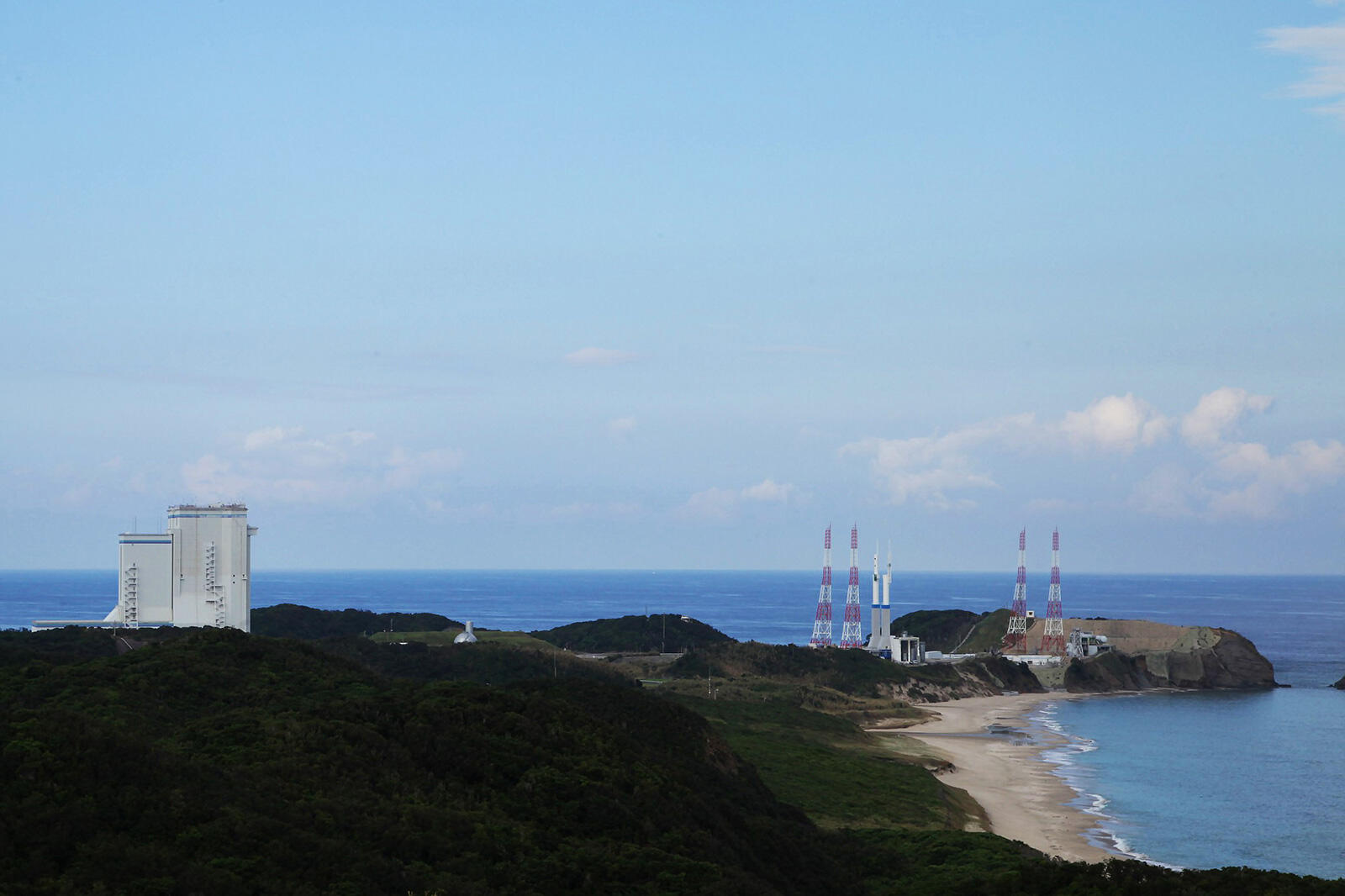
Tagawa
Yes it was. I still clearly remember that feeling which is difficult to put into words, and I subsequently recommended to everybody I met that they should go and watch a launch [laughs]. "You really have to go and watch," I'd tell them. As you're in charge of the H3 Launch Vehicle that will replace the H-IIA, I expect that you must be under a lot of pressure and experience massive moments of delight and disappointment.
Okada
The rocket development workplace is like an accumulation of battles with technology. It's as if it was our destiny. It's a situation in which the string of tension cannot be loosened for a moment, but the final result of everything that we have built up is a rocket launch. It is very much a single roll of the dice. Because we have to definitely ensure the launch is a success.
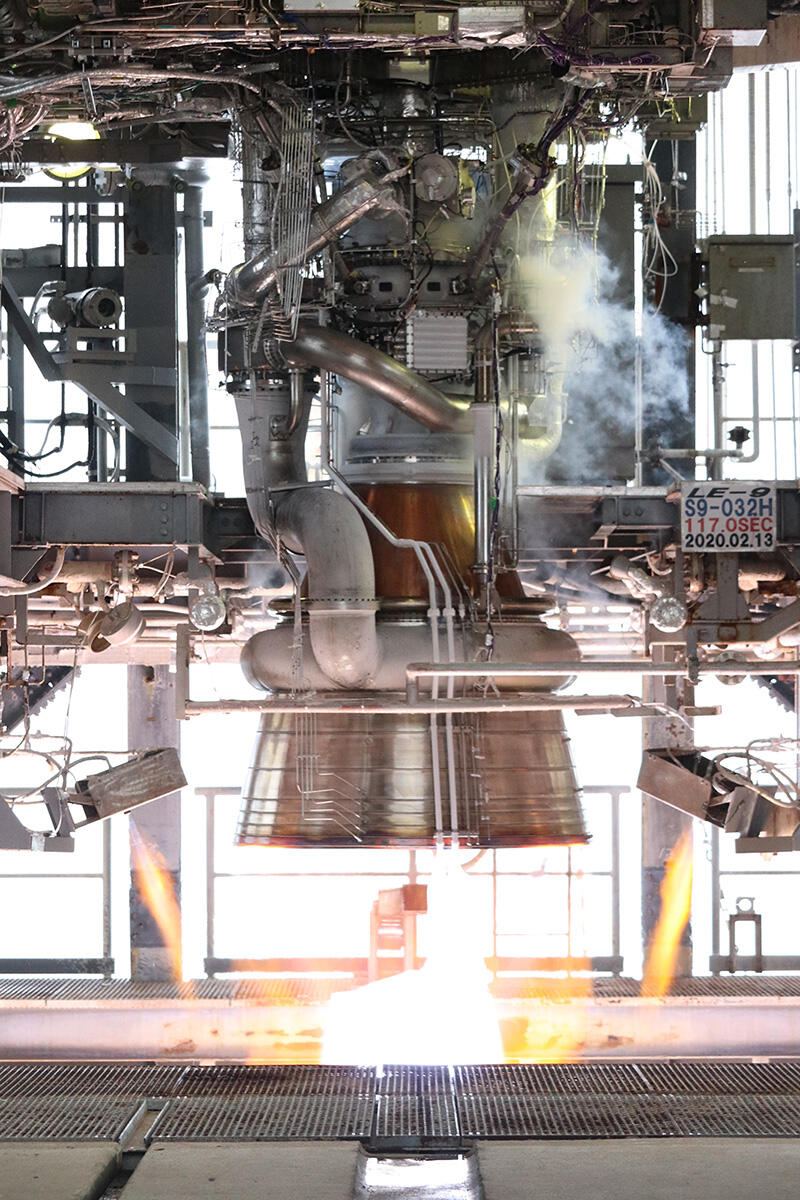
LE-9 main engine firing test
Tagawa
How far has the development of the H3 Launch Vehicle reached?
Okada
I think you could say that we are at the last camp before the summit. We were there at one stage last year, but were forced to retreat back to one camp below due to the occurrence of a technical issue during the firing test of the under-development LE-9 main engine, on which we decided that we should change the design. It was a decision made with reluctance, but we were given permission to change the launch date from FY2020 to FY2021, and now we have climbed back to the last camp. We can see the summit, but before it lies an incredibly steep hill that we are now clambering up like rock climbers. That's where we now stand.
Tagawa
What sort of processes are there from the final camp up that steep gradient to the summit?
Okada
The rocket body (Test Flight No.1) has already been assembled at Tanegashima Space Center, and the LE-9 main engine is in the final developmental stage. In May last year an issue arose in this engine due to a complicated phenomenon that way exceeded our imaginations. This issue is now in the process of being solved, and we expect it to be finished in a few months from now.
Tagawa
What do you use as a support when some sort of difficulty like that arises?
Okada
I guess it's that feeling of "we're going to make a success of this no matter what." That's the feeling that urges me along, but even so when I'm faced with a new test that I have no experience of, I occasionally feel something that transcends tension and becomes fear. This is because something that is beyond my imagination presents itself in front of me. However, if you confront these phenomena head-on the physics that are the essentials become clear. Then you realize that these things can be overcome, and the repeated process of these experiences is why I have got to where I am today.
Tagawa
I can't even imagine that sort of pressure myself.
Okada
However sophisticated a simulation might be, it will never be 100% perfect. This is because most technological issues arise at a point that goes beyond simulation. Since you cannot continue with development in the way you have been when an issue occurs, you must always try to be vigilant in your risk management. Things like preparing a second design and replacement components. But there is a finite amount of time that has been allotted to us for the postponement of the launch. This is the moment of truth, a situation in which we have to do our best.
Tagawa
The clock is really running down on the launch, isn't it.
Okada
Yes. We will launch the Test Flight No.1 this year.
The H3 Launch Vehicle has a huge symbolic value
as something to capture people's hearts
Okada
There's something that I'd like to ask you. What do you think about the design possibilities of rockets? Rockets are a product used in the transportation service of taking things into outer space and require the most extreme specifications; this means that their form is decided due to the enormous amount of physical considerations. In the midst of this reality, is there any point in pursuing design in the same way that it is pursued in ordinary products? This is a point that I sometimes think about.
Tagawa
I'm not sure if this falls within the scope of design, but one way of looking at it is whether or not people feel something when they look at a rocket. The possibilities for design expand when you focus on that. To put it another way, I think that this links in with the matter of symbolism. The number of rockets is extremely limited, and as they have an overwhelming presence that makes everybody say "Wow!" they certainly have a powerful symbolism.
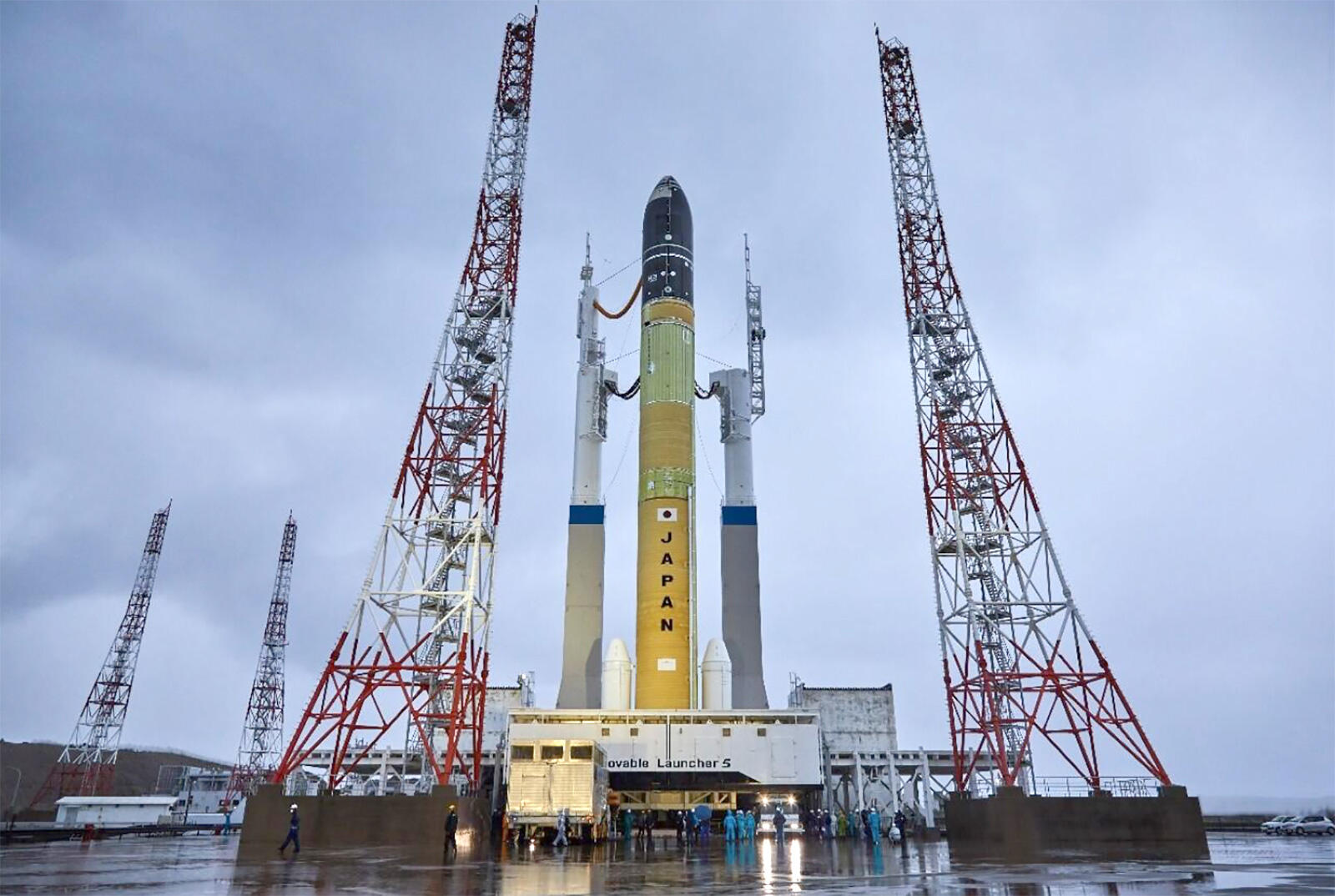
Okada
You're definitely right.
Tagawa
Symbols mean things like emblems, images, codes and so on; for example, the rising sun flag is the symbol of Japan. Various people from time to time project on to that rising sun all sorts of personal episodes such as hopes, expectations and prayers. There are some people who use symbols as the receptacles to express their feelings. And the symbols with the largest capacities are what we designers call "good symbols." The entity of rockets are probably the most symbolic among the objects that humans can make, and I think that they have potential in that sense. When I saw the shape of a rocket I thought it was attractive, and already had sufficient possibilities.
Okada
We did the best we could amid the restrictions. For example, maintaining an awareness of the development of services to overseas, we changed the "NIPPON" marking currently on the H-IIA Launch Vehicle to "JAPAN," and drew a black arrow pointing to outer space on the satellite mounted part of the nose cone, which is called the payload fairing.
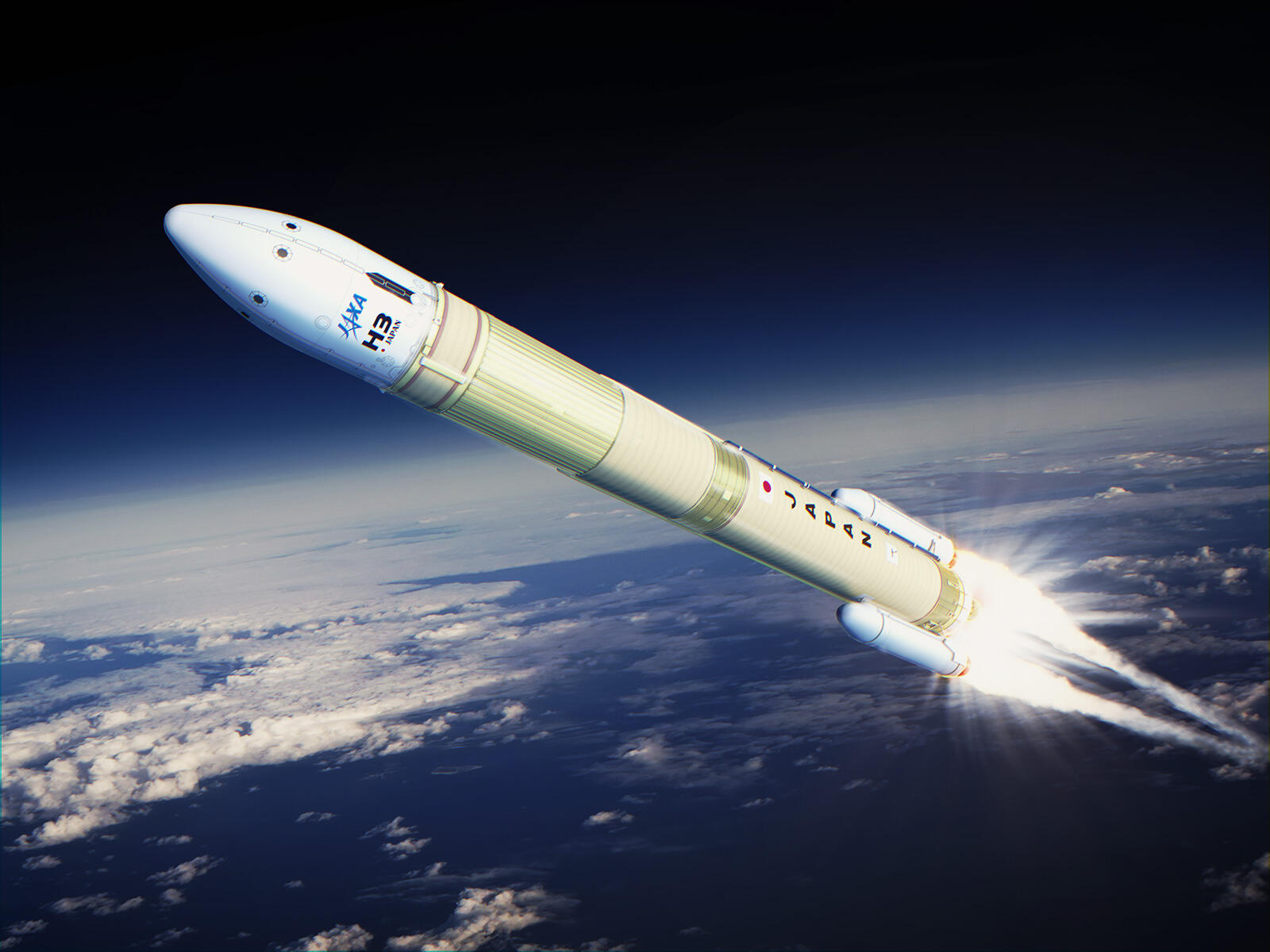
Tagawa
It's a really smart shape, isn't it.
Okada
We honed the system to the greatest possible extent throughout, and pursued the design with the same image. We examined all sorts of fonts for the typography of the word "JAPAN," and vacillated over it until everybody was fed up [Laughs]. There were no cutting corners regarding that.
Tagawa
It's fantastic that you are taking the graphics side so seriously too.
Okada
Maybe my fastidiousness about graphics is particularly strong [Laughs]. Furthermore, asking people's opinions and then trying to address all of them is an infinite task that will never take shape, so while I sought opinions I made the final decision that "we'll go with this." There was no alternative but to make a single proposal based on my own esthetic sense.
Tagawa
That point is indeed something that cannot be decided democratically. When a design approaches a high level, the context becomes vital. In other words, it's not just a design-only world view. Design also functions as a part of an incredibly complex world view including for example in what way you want the rocket to be used, and what the merits and demerits of its use are, so I think it was correct that you, who understands that sophisticated context better than anyone else made the decision.
Okada
There was a type of pressure on me that was different from that in the engineering field. But I suppose it was quite a fun type of pressure [Laughs].
Tagawa
Even though, for example, the engineering restrictions were stringent, I think that the way you made fine-tunings through the power of design in the areas where you had leeway to do so is really significant.
Okada
However, the problem here is that regardless of how far you pursue design you're not going to get an immediate return in the business sense. This is because you're not going to be selling that rockets to all the people who look at and admire it, and as I said before at the end of the day a rocket is a means of transportation and the party in charge of that service is Mitsubishi Heavy Industries. As long as the operation of the H3 Launch Vehicle is left to Mitsubishi Heavy Industries, the most important thing is to create a rocket that is easy for them to use.
Tagawa
I really understand what you mean. Maintaining that balance is difficult, but if for example you go to some old Japanese cake shop that has been in business since the Edo era, there's a classy feeling and you can pass a time that makes you feel a sort of self-correction. In other words, I have a feeling that to a surprising extent people do not go to a shop just because the cakes are tasty or their price is reasonable. In that way I think that the things around us that have been long established are soundly designed with regard to the areas where short-term business returns cannot be hoped for. This probably links in with the affection value, the sense that "It would be dreadful if that old cake shop closes."。
Okada
It's a case of capturing the hearts of many people by being considerate to the feelings of humans, isn't it. Design is an effective method with regard to those feelings.
Tagawa
So when you're looking from the perspective of JAXA, while likening the H3 Launch Vehicle to a symbol of Japan you fine tune it right down to the graphic design, and turn it into an admiration-worthy entity that children will say "Wow! It's so cool!" when they see it. Simultaneously, if you can put to use in university education all the technical development knowledge and so on you have cultivated over the years, that will lead to incredible organic value way beyond the sphere of transportation services.
A wish to be particular about the design
of rocket live broadcasts too
Okada
I've brought something with me today in way of introduction. [While showing documents] What we have here are applications that display the actual state of the rocket flying through space during the live broadcast. The concept and design varies from one country and one organization to another; this is the European Space Agency's, the next one is the US's Space X, the third is the US's major launch service company ULA, the fourth is China's and the last one is us, JAXA. They are simple applications showing at how many kilometers per second and where the craft is currently flying, but they each have their own individuality. So when we revise our application for the H3, I want to put some effort into the design.
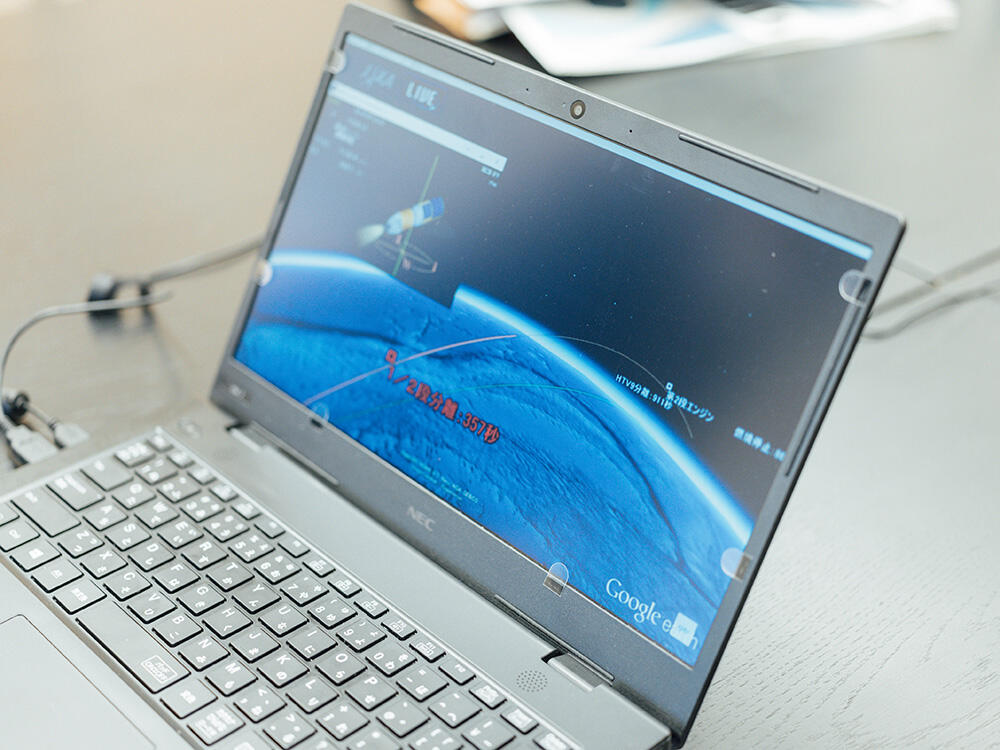
Tagawa
When you actually unveil this, will you do so over your website?
Okada
We have a separate application for the control room during the launch, so we are thinking of using this one for public viewing over the Internet.
Tagawa
I think that probably in that sense you are unorthodox. But from a global view, there are a lot of people who are thinking "I want to improve this uncool thing!" that they are doing, so your ardor is fantastic.
Okada
I think that making something that is extremely simple but at the same time stylish is pretty difficult. If someone said "do it yourself," I'm sure I wouldn't be able to! [Laughs]. Thanks very much for our chat today, I've had a really good time.
Profile

TAGAWA Kinya
Design Engineer
Director, Takram
Works to improve the relationships between people, society and technology using the twin spheres of design and engineering. Recently, he has been enthusiastically involved in the work of data service brand design. His hobby is traveling, and is hoping that society goes back to one in which travel is possible.
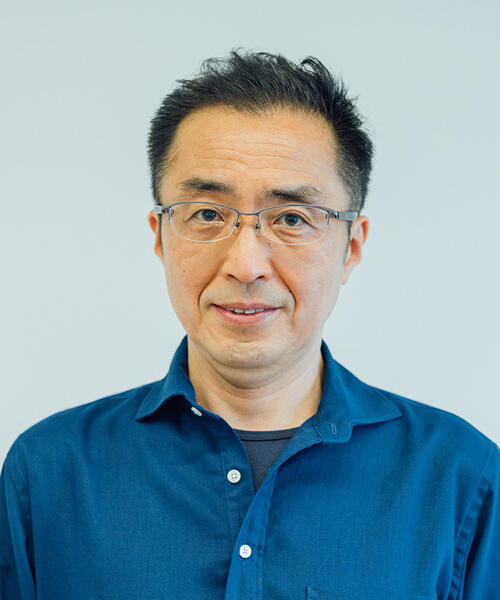
OKADA Masashi
Project Manager
H3 Project Team
Space Transportation Technology Directorate
Born in Aichi Prefecture. At the age of 15 he watched footage of the Saturn V launch and set his heart on rocket development. Took up his present post after working in the technical planning division of rocket development programs at Tanegashima. He did a little hang-gliding during his student years, and refreshes himself at the weekend by playing the piano, working out in the gym and cooking. "Make haste slowly" is his motto.
All the images are copyrighted ©JAXA unless otherwise noticed.
- Home>
- Global Activity>
- Public Relations>
- JAXA’s>
- JAXA's No.84>
- Special Talk: Design and Engineering